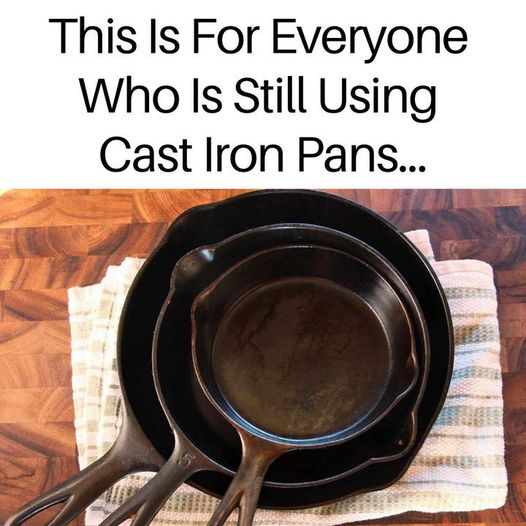Most people who cook with cast-iron pans love them with the heat of a thousand suns. They’re a must for so many one-skillet meals and handy for everything from breakfast to dessert. However, as good as your skillet can be for making all these favorites, it’s not a tool suited for all foods.
Delicate Fish:

The same heat retention that means your steak will get a beautiful brown crust in a cast iron pan will probably be the end of your lovely piece of trout or tilapia. Save the delicate fish for the non-stick pan. However, salmon and other meaty fish that can stand the heat are fine.
Read More: Cast Iron Pans & Your Health: 7 Important Facts You Should Know
Eggs and Other Sticky Things (for a while):

Once your pan is well-seasoned, no problem at all. But when your pan is new, even though it’s seasoned, sticky things like eggs still may present a problem. Unless you like brown eggs and a gunky pan, relegate them to a regular non-stick pan for a while.
Acidic things—maybe:

There seem to be mixed feelings on this one. Some people say that tomatoes or lemons can react with the metal and cause it to leach into the food and break down the pan’s seasoning. Others believe that’s a myth. And if acidic foods discolor your pan a bit, a baking soda scrub will take care of it.
Smelly Foods:

Garlic, peppers, some fish, stinky cheeses and more tend to leave aromatic memories with your cast-iron pan that will turn up in the next couple of things you cook in it. Ten minutes in a 400ºF oven will generally remove the smell, but it’s best to avoid cooking foods that would be ruined by those lingering aromas for the next few cooks.
Anything That Overcrowds The Skillet:

This isn’t about a single ingredient; it’s about how much of each ingredient there is. If you want all of the meals to be ready at the same time, it’s very tempting to put everything on the pan at once. The problem with this is that it’s easy for the pot to get too full. Even though cast iron heats up evenly, this will change the quality of the food you’re cooking.
One thing to note: This list is for traditional cast-iron pans. If you’ve got an enamel-coated cast iron pan, you don’t need to adhere to this list—you can just get cooking! And if you make a mistake with your cast iron pan and it gets really dirty, there are plenty of cleaning tips and instructions available on how to re-season your pan. Cast iron is tough and can withstand a slip-up or two.
